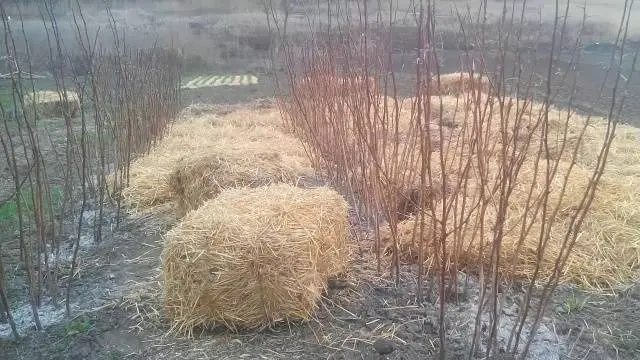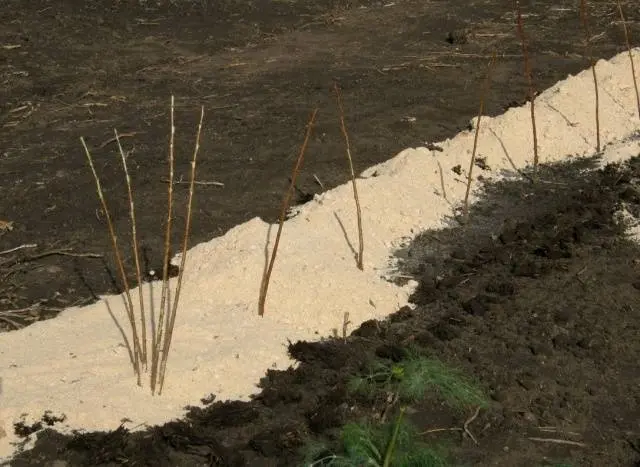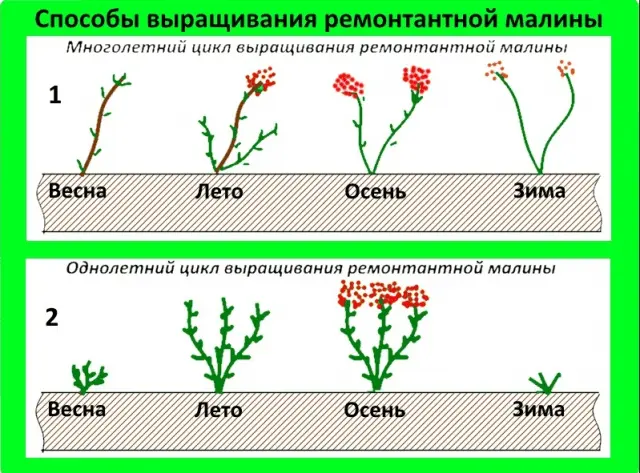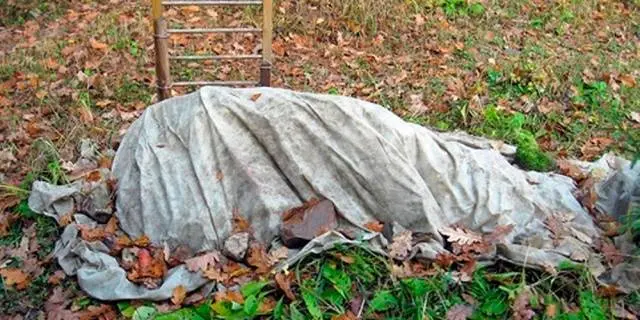Contents
The main feature of remontant raspberries is its abundant harvest, which, with proper care, can be harvested twice a year. The care, processing and preparation for winter of this raspberry variety is very different from the summer variety familiar to many.

This article will look at how remontant raspberries are prepared for winter. You will learn how and when to fertilize raspberries, how to properly water and mulch bushes in the fall, and whether you need to prune and cover raspberries for the winter.
Soil preparation in autumn
Preparation of remontant raspberries for winter begins with the ground. It should be saturated with useful substances, protected from the cold and be sufficiently hydrated. In this case, next season it is worth waiting for a big harvest of raspberries.
Fertilizer land

In summer, manure is used as soil fertilizer, but it must be stopped in the soil in mid-June. In the last week of July, mulching of raspberry bushes is carried out. In order for the stem to become better strengthened in the last days of August, phosphorus and potash fertilizers must be applied to the ground. As a rule, for feeding remontant raspberries use:
- Monopotassium phosphate and potassium magnesia, which increase the frost resistance of raspberries. At the same time, it is important to pay attention to the quality of fertilizers, otherwise there is no point in applying them.
- Superphosphate is considered the main phosphate fertilizer.
- So that the raspberry roots do not suffer from diseases and pests in the autumn months, ferrous sulfate is also introduced into the soil.
The last time they feed planting remontant raspberries in the last week of October. In this case, you need to scatter a little organic matter on the ground. Thus, over the next 4–5 months, the fertilizers will decompose, so that in the spring the remontant raspberries will receive the full range of useful substances.
Watering and mulching
Remontant raspberries need watering before wintering. So, the last watering should be done about two weeks before the first frost. This event is especially important to hold if it was a dry autumn.

Some gardeners water remontant raspberries after the first icy crust appears. They add 2-3 buckets of water to each bush. This is done so that the roots do not dry out over the winter.

After the last watering of raspberries, soil mulching should be performed. Peat, spruce, fallen leaves or sawdust can be used as mulch. It is important to create a non-acidic and non-alkaline environment. Mulch should be covered with layers equal to about 5 – 6 cm. If you fill up the roots of remontant raspberry bushes more, then the stems can rot, resulting in an ideal breeding ground for bacteria and infections.
Raspberry pruning
When is the best time to prune? remontant raspberry is a lot of controversy. Some gardeners are surethat this should be done immediately before frost, explaining that at this time the movement of juice along the raspberry stems stops, and the plant will more easily tolerate pruning. Others saythat unnecessary shoots should be removed immediately after the end of the fruiting period. So, the rhizome of remontant raspberries will receive more strength for development.

There is a third opinion. Most gardeners and summer residents agree that raspberry pruning is best done in early September, no later than early October. This opinion is based on the fact that during this period there is still a lot of juice in the stems of raspberries, but its circulation has decreased significantly after the summer.
Methods for trimming raspberry stems
First, a stem check should be carried out to determine which shoots are to be pruned. Among them are fragile, old, sick, weak and damaged, as well as those that have not fruited for the last 2 years. They need to be completely removed.

To prevent raspberries from spreading throughout your garden, you need to trim the roots. A bayonet shovel is stuck around each bush at a distance of 30 cm, which will chop off the ends of the root system. If you need to renew the raspberry, then remove the perennial stem from the center of the bush, which will help the rapid development of new shoots.

Some gardeners use the double pruning method. So, you can improve the quality of the crop, since all the nutrients will be directed to the berries. To do this, in addition to removing old raspberry stalks, you need to pinch young shoots. Thus, a younger, younger group of kidneys is formed. However, it is important to avoid thickening the raspberries. To do this, leave 30 cm between the stems. In the spring, the shortening of the shoots is repeated, they are cut to a well-developed bud.

Cut stems of remontant raspberries should be burned. This is done to protect the raspberry from insects and pathogenic bacteria that can harm the site. After that, the bushes should be dug up and all weeds removed. Otherwise, they will rob the raspberry bushes of such valuable nutrients, which will make them more vulnerable and may not survive the frost.

How to properly bend
Although raspberries are frost-resistant, severe frosts can still destroy them. Given this fact, some gardeners resort to bending the bushes to the ground. The best covering material for all types of bushes and trees is snow. Thanks to bending down, raspberry bushes will be completely hidden under a layer of snow, as a result of which they will be able to survive even the most severe frosts.

If your remontant raspberries grow exactly along the trellises, then the bushes should be bent one on top of the other, while fixing the shoot to the bottom of the next bush with wire. Since frosts make the stems more fragile, bending down should be done at a positive temperature, just before the first frosty days.
After the onset of heat, the repair raspberry bushes must be carefully released. They will straighten themselves. If over time in the spring it will be found that some branches have broken or not survived, then they will need to be removed.

It is also worth considering one more fact. If you collect remontant raspberries twice a year, then the autumn berries will be small and rather dry, since the bush is very depleted over the summer. Therefore, some gardeners plant a regular and remontant raspberry variety on their plots and harvest twice a year. In the summer – from the summer variety and in the fall – from the remontant.
In very windy and little snow regions, it is not enough to simply bend down, but skilled gardeners have learned how to get out of this situation.
Installation of frost protection systems
If your raspberries grow in an open field and snow is blown off the bushes, then you can come up with a snow retention system. Its essence lies in the installation of a barrier on the windward side. To do this, you can dig sheets of plywood or polycarbonate into the ground. If we talk about durability, then it is better to give preference to polycarbonate, as it is not afraid of frost and is not subject to decay.

To secure the snow retention system, you can tie it to the trellis if necessary. The structure must be placed so that it protects the raspberries from the wind, that is, it must be installed from the side of the predominant wind direction in winter. To properly install the structure, you can check the wind rose. You can find it on the site of the hydrometeorological service of the region.
If snow blows even through a snow-retaining structure or it falls too little in your area, then raspberry bushes will need to be additionally covered with non-woven material specially designed for this. For example, spunbond or lutrasil.

In this case, it is necessary to bend the branches of the remontant raspberry, tying them to the bottom wire, and lay the covering material on top in several layers, which must also be fixed. If you live in a region with a harsh climate, but a low amount of precipitation, then the covering material with remontant raspberries can be additionally covered with arc-shaped cellular polycarbonate.
So, with proper care, repair raspberries will bring your family a rich harvest of tasty and vitamin-rich berries. Follow the recommendations in this article and you’ll be fine.
You can get more information about the features of growing and preparing for winter remontant raspberry varieties from the video:









